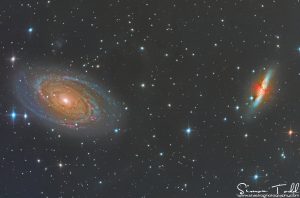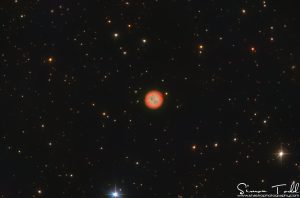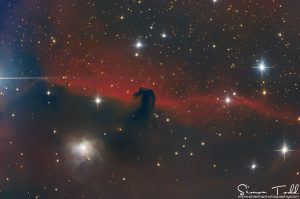 After much waiting, I finally have the RGB Data to go with the luminance layer, a new learning curve was the HDR Compose process in PixInsight, I used this to include the 300S Exposures I had previously that were burning out the core.
After much waiting, I finally have the RGB Data to go with the luminance layer, a new learning curve was the HDR Compose process in PixInsight, I used this to include the 300S Exposures I had previously that were burning out the core.
Equipment Used:
Imaging Camera: Qhyccd 183M Back Illuminated ColdMOS Camera at -20C
Imaging Scope: Sky-Watcher 8″ Quattro F4
Mount: Sky-Watcher EQ8 Pro
Guide Camera: Qhyccd QHY5L-II
Guide Scope: Sky-Watcher 90×50 Finder
Filter Wheel: Starlight Xpress Ltd 7x36mm EFW
Filters: Baader Planetarium LRGB + 7nm Ha
Image Acquisition: Main Sequence Software SGPro
Image Processing: PixInsight
Image Details:
101x150S in LRGB, Total 16.83 Hours
25x300S in LRGB, Total 8.33 Hours
25x600S in Ha, Total 4.16 Hours
Total exposure time: 29.32 Hours
BIAS, Darks and Flats subtracted
Target: M81 and M82 in Ursa Major
Acquisition Dates: Feb. 11, 2018, Feb. 12, 2018, Feb. 16, 2018, Feb. 23, 2018, Feb. 24, 2018, March 13, 2018, March 14, 2018, March 15, 2018, March 16, 2018, March 19, 2018, March 20, 2018


